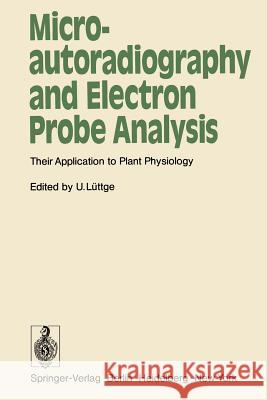Microautoradiography and Electron Probe Analysis: Their Application to Plant Physiology » książka
Microautoradiography and Electron Probe Analysis: Their Application to Plant Physiology
ISBN-13: 9783540059509 / Angielski / Miękka / 1972 / 242 str.
Microautoradiography and Electron Probe Analysis: Their Application to Plant Physiology
ISBN-13: 9783540059509 / Angielski / Miękka / 1972 / 242 str.
(netto: 384,26 VAT: 5%)
Najniższa cena z 30 dni: 385,52
ok. 22 dni roboczych
Bez gwarancji dostawy przed świętami
Darmowa dostawa!
In biological literature, several definitions of quantitative autoradio- graphy are given. The term is defined as either the determination and com- parison of the density of silver grains above various structures or under varying conditions, or the determination of absolute quantities of radio- activity. In both these cases, photometric measurement serves for more rapid and more exact evaluation of grain densities than would be possible by visual counting of the grains. The equipment generally used for the photometric measurement of silver grains consists of a microscope, a photocell, an electronic amplifier system and a display unit. Grains can be made accessible to photometric evaluation by various kinds of microscopic illumination: 1. Substage bright-field illumination. 2. Substage dark-field illumination. 3. Incident dark-field illumination. 4. Vertical bright-field illumination. With all these types of illumination, the relationship between the luminous flux I absorbed by the film, scattered into the objective and reflected or diffracted, and the flux 10 which is not affected by the film is used as a measure of grain density. Since these are differential measurements, the light beam I transmitted by the film is in itself a measure of grain density if the luminous flux 10 incident on the grains is kept constant. This approach has been used in a large number of measuring setups.











